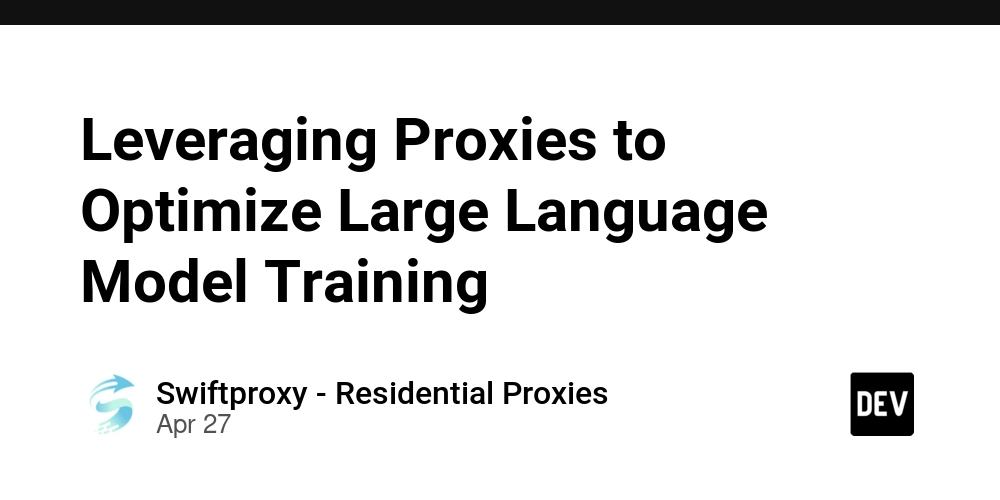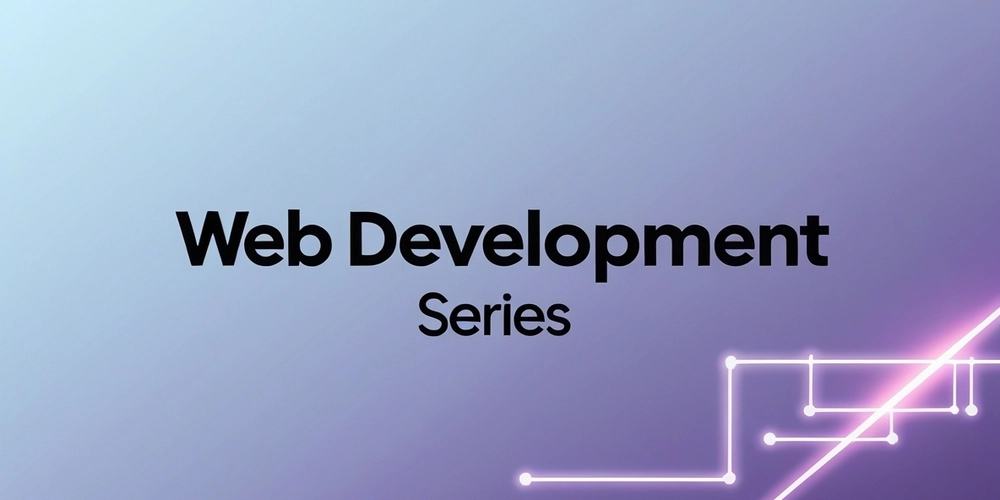Leveraging Proxies to Optimize Large Language Model Training
Large Language Models (LLMs) are transforming the AI landscape. These sophisticated systems power everything from virtual assistants to automated content creation and multilingual translation. However, one thing that sets top-tier LLMs apart from the rest is the data. The more data these models have, the smarter and more intuitive they become. However, collecting high-quality, diverse datasets isn't easy. Geo-restrictions, IP bans, rate limits, and security concerns often stand in the way. That's where proxies come in. Proxies are essential tools for data collection—acting as a bridge between scrapers and the data they need. They help bypass barriers, maintain anonymity, and keep things running at scale. If you’re an AI developer or researcher, proxies could be the missing link between you and the next breakthrough in model performance. In this article, we’ll break down how proxies can turbocharge your LLM training, tackle common roadblocks, and show you exactly how to implement them for maximum efficiency. By the end, you’ll see why proxies are not just a luxury—they’re a necessity. Why Massive, Diverse Data is Crucial for LLMs To train a truly powerful LLM, you need a treasure trove of high-quality data. These models learn patterns and nuances by digesting enormous datasets, and the broader and more varied the data, the better the results. What makes up this data? It's a mix of: Public web data: News, blogs, and research papers. Social media content: Tweets, forum posts, and comments. Books and literature: From classics to e-books. Specialized content: Legal, medical, and financial data for sector-specific models. The bigger the dataset, the more context-aware the LLM becomes, able to switch between topics, adapt to language, and even pick up on cultural subtleties. But here's the twist—getting all that data isn’t as simple as it sounds. The Struggles of Data Collection Without Proxies Without proxies, training LLMs becomes a race against a series of barriers. Here’s what can trip you up: Geo-Restrictions: Many valuable datasets are locked behind regional barriers. Without proxies, you’re stuck scraping data from one location, which limits linguistic and cultural diversity. Imagine trying to train a multilingual model but only using English-language sources. It won’t perform well in other languages. Anti-Bot Measures: Websites are cracking down on scraping with IP bans, rate limits, and CAPTCHA challenges. If you're pulling millions of data points, your IP will get flagged in no time. Security Risks: Scraping without proxies leaves you exposed to tracking, legal action, and data leaks. You're operating in a high-risk zone without the shield that proxies offer. Data Bias: With limited access, you're relying on what’s available, which often leads to a skewed dataset. LLMs trained on biased data end up reinforcing stereotypes, limiting their general applicability. Scalability Issues: AI training demands fast, continuous data collection. Without proxies, scraping becomes slow and fragmented. This isn’t ideal when you're working with datasets in the gigabyte or terabyte range. How Proxies Fix These Issues Proxies take care of these challenges. Here’s how: Geo-Restriction Bypass: With proxies, you can access global data. Proxies provide IP addresses from different regions, making it look like you're scraping from a diverse set of locations. This not only reduces biases but also gives your model the global perspective it needs. Avoid IP Bans and CAPTCHAs: Proxies rotate IPs for you. So when one IP gets blocked, the next one steps in. You keep your data pipeline running smoothly without interruptions. Boost Security and Anonymity: Proxies mask your real IP, adding a layer of security to your scraping operations. This helps you stay compliant with regulations and shields you from detection. Scalability: Proxies optimize data collection, allowing for distributed requests that speed up the process. By using a network of IPs across the globe, you can pull data at scale without bottlenecks. Types of Proxies for LLM Training Not all proxies are created equal. For LLM training, you need the right type for your needs. Here's a breakdown of the best options: Residential Proxies: These are the gold standard for undetectable scraping. They use real IPs from actual households, making them nearly impossible to detect as bots. They’re ideal for accessing hard-to-reach datasets, like news sites or academic publications, where accuracy and trust matter most. Datacenter Proxies: Fast, reliable, and cost-effective, these are perfect for bulk data extraction. They work best for scraping publicly available data like blogs and open-source repositories. They’re not as stealthy as residential proxies but are a great option when speed and volume are priorities. Mobile Proxies: Need to scrape mobile-specific data? Mobile proxies use IPs from real mobil

Large Language Models (LLMs) are transforming the AI landscape. These sophisticated systems power everything from virtual assistants to automated content creation and multilingual translation. However, one thing that sets top-tier LLMs apart from the rest is the data. The more data these models have, the smarter and more intuitive they become.
However, collecting high-quality, diverse datasets isn't easy. Geo-restrictions, IP bans, rate limits, and security concerns often stand in the way. That's where proxies come in.
Proxies are essential tools for data collection—acting as a bridge between scrapers and the data they need. They help bypass barriers, maintain anonymity, and keep things running at scale. If you’re an AI developer or researcher, proxies could be the missing link between you and the next breakthrough in model performance.
In this article, we’ll break down how proxies can turbocharge your LLM training, tackle common roadblocks, and show you exactly how to implement them for maximum efficiency. By the end, you’ll see why proxies are not just a luxury—they’re a necessity.
Why Massive, Diverse Data is Crucial for LLMs
To train a truly powerful LLM, you need a treasure trove of high-quality data. These models learn patterns and nuances by digesting enormous datasets, and the broader and more varied the data, the better the results.
What makes up this data? It's a mix of:
Public web data: News, blogs, and research papers.
Social media content: Tweets, forum posts, and comments.
Books and literature: From classics to e-books.
Specialized content: Legal, medical, and financial data for sector-specific models.
The bigger the dataset, the more context-aware the LLM becomes, able to switch between topics, adapt to language, and even pick up on cultural subtleties. But here's the twist—getting all that data isn’t as simple as it sounds.
The Struggles of Data Collection Without Proxies
Without proxies, training LLMs becomes a race against a series of barriers. Here’s what can trip you up:
- Geo-Restrictions: Many valuable datasets are locked behind regional barriers. Without proxies, you’re stuck scraping data from one location, which limits linguistic and cultural diversity. Imagine trying to train a multilingual model but only using English-language sources. It won’t perform well in other languages.
- Anti-Bot Measures: Websites are cracking down on scraping with IP bans, rate limits, and CAPTCHA challenges. If you're pulling millions of data points, your IP will get flagged in no time.
- Security Risks: Scraping without proxies leaves you exposed to tracking, legal action, and data leaks. You're operating in a high-risk zone without the shield that proxies offer.
- Data Bias: With limited access, you're relying on what’s available, which often leads to a skewed dataset. LLMs trained on biased data end up reinforcing stereotypes, limiting their general applicability.
- Scalability Issues: AI training demands fast, continuous data collection. Without proxies, scraping becomes slow and fragmented. This isn’t ideal when you're working with datasets in the gigabyte or terabyte range.
How Proxies Fix These Issues
Proxies take care of these challenges. Here’s how:
- Geo-Restriction Bypass: With proxies, you can access global data. Proxies provide IP addresses from different regions, making it look like you're scraping from a diverse set of locations. This not only reduces biases but also gives your model the global perspective it needs.
- Avoid IP Bans and CAPTCHAs: Proxies rotate IPs for you. So when one IP gets blocked, the next one steps in. You keep your data pipeline running smoothly without interruptions.
- Boost Security and Anonymity: Proxies mask your real IP, adding a layer of security to your scraping operations. This helps you stay compliant with regulations and shields you from detection.
- Scalability: Proxies optimize data collection, allowing for distributed requests that speed up the process. By using a network of IPs across the globe, you can pull data at scale without bottlenecks.
Types of Proxies for LLM Training
Not all proxies are created equal. For LLM training, you need the right type for your needs. Here's a breakdown of the best options:
- Residential Proxies: These are the gold standard for undetectable scraping. They use real IPs from actual households, making them nearly impossible to detect as bots. They’re ideal for accessing hard-to-reach datasets, like news sites or academic publications, where accuracy and trust matter most.
- Datacenter Proxies: Fast, reliable, and cost-effective, these are perfect for bulk data extraction. They work best for scraping publicly available data like blogs and open-source repositories. They’re not as stealthy as residential proxies but are a great option when speed and volume are priorities.
- Mobile Proxies: Need to scrape mobile-specific data? Mobile proxies use IPs from real mobile devices, giving you access to mobile-optimized content. These are great for training models on conversational AI or chatbot development, where mobile data plays a huge role.
- ISP Proxies: Offering the best of both worlds—speed and authenticity—ISP proxies combine the high trust of residential proxies with the fast speeds of datacenter proxies. They’re a solid choice for enterprise-level AI projects that require both reliability and anonymity.
How to Use Proxies for LLM Training
Using proxies isn’t just about switching on a service and scraping away. Here are some best practices to ensure you're making the most of them:
- Select the Right Proxy Type: Consider what type of data you need. Sensitive or geo-restricted content? Go for residential or mobile proxies. Need bulk, high-speed scraping? Datacenter proxies are your friend.
- Proxy Rotation: Proxies should rotate regularly to avoid detection. Whether it’s by session, geo-location, or random intervals, rotating proxies ensure you don’t get flagged for excessive requests from the same IP.
- Mimic Human Behavior: Web scraping bots can be detected. Make your requests look natural—randomize your request intervals and rotate user-agent strings and cookies.
- Compliance with Data Privacy Laws: Always ensure your scraping adheres to GDPR, CCPA, and other data protection regulations. Proxies can help anonymize requests and ensure that you're only scraping publicly available data.
- Monitor Proxy Performance: Keep track of how your proxies are performing. Regularly check response times, success rates, and potential IP blocks to ensure you're not running into issues down the line.
The Future of LLM Training with Proxies
As AI continues to evolve, proxies will only become more integral to LLM development. Here's what you can expect:
- AI-Driven Proxy Management: Future AI scrapers will automatically optimize proxy usage based on real-time factors like success rates and website detection patterns.
- Enhanced Security: As cyber threats increase, proxy providers will strengthen encryption protocols and provide more secure, anonymous access to data.
- Real-Time Data Collection: LLMs will be trained not just on static datasets but on real-time data. Proxies will help deliver fast, continuous data updates for more adaptive, accurate models.
Conclusion
Proxies aren’t just tools—they’re the backbone of efficient, ethical, and scalable LLM training. With the right proxy strategy, your LLM can access the data it needs, stay secure, and continue learning from the world’s vast, ever-changing information. Ready to give your models a competitive edge? It all starts with the right proxies.
































































































































































![[The AI Show Episode 143]: ChatGPT Revenue Surge, New AGI Timelines, Amazon’s AI Agent, Claude for Education, Model Context Protocol & LLMs Pass the Turing Test](https://www.marketingaiinstitute.com/hubfs/ep%20143%20cover.png)































































































































![[DEALS] Koofr Cloud Storage: Lifetime Subscription (1TB) (80% off) & Other Deals Up To 98% Off – Offers End Soon!](https://www.javacodegeeks.com/wp-content/uploads/2012/12/jcg-logo.jpg)
























![Is this too much for a modular monolith system? [closed]](https://i.sstatic.net/pYL1nsfg.png)




















































































































_roibu_Alamy.jpg?width=1280&auto=webp&quality=80&disable=upscale#)




 CISO’s Core Focus.webp?#)





































































































![M4 MacBook Air Drops to Just $849 - Act Fast! [Lowest Price Ever]](https://www.iclarified.com/images/news/97140/97140/97140-640.jpg)
![Apple Smart Glasses Not Close to Being Ready as Meta Targets 2025 [Gurman]](https://www.iclarified.com/images/news/97139/97139/97139-640.jpg)
![iPadOS 19 May Introduce Menu Bar, iOS 19 to Support External Displays [Rumor]](https://www.iclarified.com/images/news/97137/97137/97137-640.jpg)






































































































